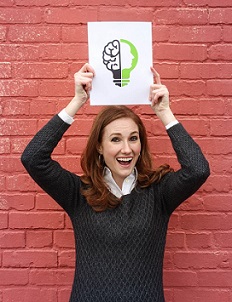 Now, more than ever, companies need creativity and creative thinking in the day-to-day operations in order to truly excel and rise above the competition.
Now, more than ever, companies need creativity and creative thinking in the day-to-day operations in order to truly excel and rise above the competition.
We often think of the great innovators such as Thomas Edison or Steve Jobs as the “creatives”, the kind of people who had such revolutionary ideas that they changed the world. Or we read stories like that of Elizabeth Holmes, founder and CEO of Theranos, who developed a simpler, less painful way to test blood that has turned her into the youngest self-made female billionaire in the world and we think “I could never have an idea like that.”
These stories are great examples of game-changing creativity and innovation, but they overlook the everyday creativity and innovation that makes companies tick. And that is the kind of creativity you can use to drive sales, product development, or customer service improvements in your own company. You don’t need to have ideas that change the entire world, you just need ideas to change the world you live in.
Creativity and innovation in the day-to-day starts with looking at things differently and taking on the perspectives of others. Get inside the head of your customer, boss, partner, or supplier to determine how you can impact their outcome in a positive way. This is especially critical for your customers, thinking from their perspective to understand what they want and need. But even if you don’t interact with your company’s customers on a daily basis, think of your boss or partner as a customer, and find a way to delight them with your work.
After you’ve flipped your perspective and taken the view of those around you, start testing. New perspectives on a problem or process can give you lots of ideas about how to improve things or move the needle in terms of sales or growth, but until you try some of those ideas you will never know which is the best or right choice. Without the feedback you get from trying out your ideas, you can’t have enough data to move forward. Don’t get stuck analyzing all of your options without testing at least some of them first. If testing isn’t really feasible with your specific situation, make sure and talk to a number of different people about your ideas and options.
Once you have data and feedback from trying out your ideas, give yourself some space to think. One thing we can learn from some of the great “creative thinkers” of our time is that they took time away from work to ruminate and let their ideas float around and develop. There are stories of Edison having a pipe organ in his workshop and taking breaks to play it while others stopped work and sang along. Getting away from the office or your computer helps your brain make connections between all of the ideas and data points you’ve gathered, giving you those breakthrough Eureka! moments we hear so much about.
Creativity and innovation aren’t just for the special few who were blessed with the insight into customer’s future wants. We can’t all be like Henry Ford, knowing that while our customers say they want faster horses, what they really want are powered cars. But we can learn to develop creative and innovative thinking in everything that we do, including seemingly mundane tasks. As you develop these brain muscles and the associated skills, you begin to have more sales, develop better products, and improve customer service outcomes, and that gets noticed.
When your boss asks how you’ve been able to make such an improvement in the areas you are responsible for, talk to her about perspective and the importance of testing and feedback. Show your passion for innovating in all areas. That mindset, along with the ability to follow through, will accelerate your success in ways you can’t imagine.
___________________
Jessica Kinsey is the Founder and CEO of Flipside Thinker, where she empowers ambitious individuals to elevate their career and business success by giving them the tools to have bigger, better breakthroughs.
Featured:
